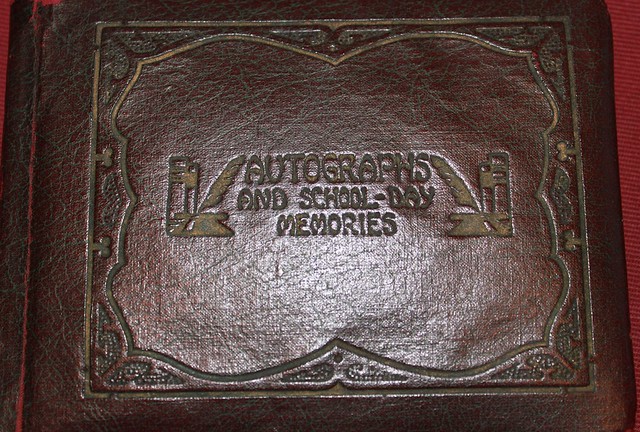
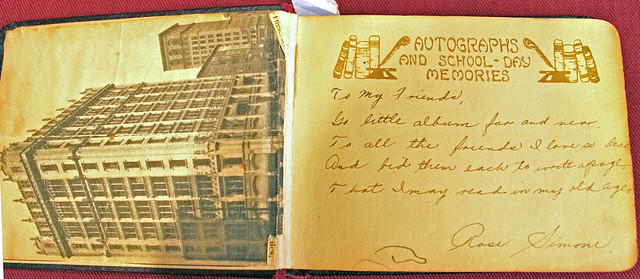
It's been quite a while since I had anything to report regarding the Manhattan Trade School report cards, which are supposedly the core of the Permanent Record project (or at least that's what it says in that little description over in the right-hand sidebar). Today, however, I have some report card-related news.
I was recently contacted by a woman named Sara Dunphy, whose grandmother, Rose Simone Antonecchia, had just passed away at the age of 102. Rose had attended Manhattan Trade in the 1920s, graduating in 1927, and Sara had come across my work regarding the Manhattan Trade report cards while Googling the school's name. She wondered if Rose's student file was included in my report card collection.
I get a fair number of inquiries like these from people whose relatives attended Manhattan Trade. Occasionally I do indeed have the relative's report card. But more often I end up saying, as I did in this case, "I'm sorry, I don't have her report card," and that's usually the end of it — I never hear from the person again. This time was different, though, because Sara thought I might be interested in seeing her grandmother's Manhattan Trade School autograph book (see photos above), which she described like so:
My grandmother was evidently proud of [Manhattan Trade] and would speak of her time there often. ... She kept a special section of one bookshelf with college and high school yearbooks, and the Manhattan Trade School autograph book became her de facto yearbook from that school. ... When I was growing up, she would proudly take out the autograph book out and show it to us. She seemed to enjoy how it represented her brief independence prior to her marriage and working/family life.
Here's the best part: The autograph book, as you'd expect, features assorted notes and messages written by Rose's classmates, who of course signed their names. And some of those students are represented in my report card collection, even though Rose herself is not.
Let's start with a student named Jennie Grillo, who wrote a note and also included a really endearing self-portrait (click photos to enlarge):
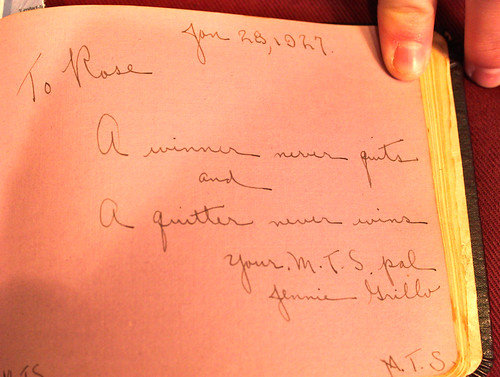

Jennie Grillo's report card is part of my collection. As longtime PermaRec readers may recall, many of the report cards included photos of the students, and I was really hoping that would be the case with Jennie's because I wanted to see how her photo compared to her self-portrait. Unfortunately, her card packet does not have a photo, but it nonetheless features lots of interesting material. Let's start with the front and back of her main card (click photos to enlarge):
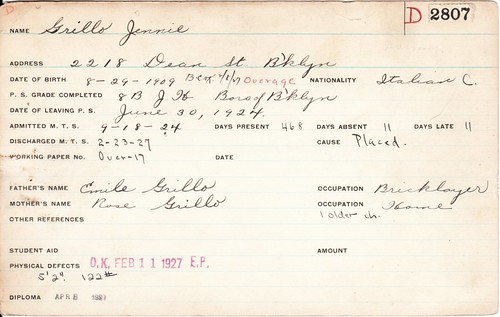
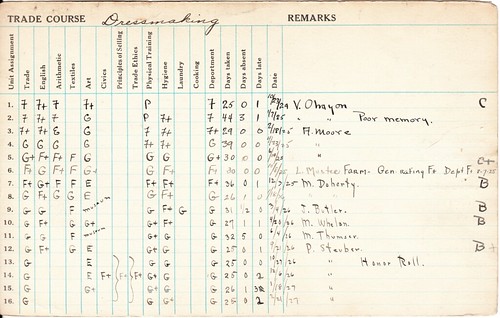
As you can see, Jennie was born in August of 1909, which means she is likely now deceased. She was of Italian descent and grew up in Brooklyn, where her father worked as a bricklayer. Like most Manhattan Trade students, she had completed the eighth grade before enrolling in trade school, where her chosen trade was dressmaking. Aside from being cited by one teacher for a "poor memory," her scholastic performance appears to have been solid. (Regarding the grades, P = Poor, F = Fair, G = Good, and E = Excellent.) It's interesting to see that two of her art grades are listed as "Museum" — not sure what that means, but perhaps she had an internship. She left the school in February of 1927.
Manhattan Trade students could not receive their diploma until they'd demonstrated a proficiency in their trade in a work setting, so the school maintained a job-placement office that helped arrange employment for the girls after they'd completed their vocational training. Many of the girls continued to use this office as a de facto employment bureau for many years after they graduated. In Jennie's case, it appears that she was referred for various jobs for nearly four years after completing her schooling, as you can see on these next two cards (click to enlarge):
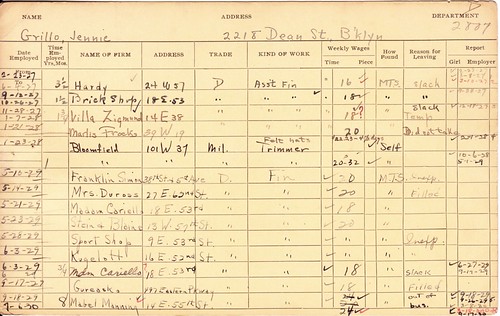
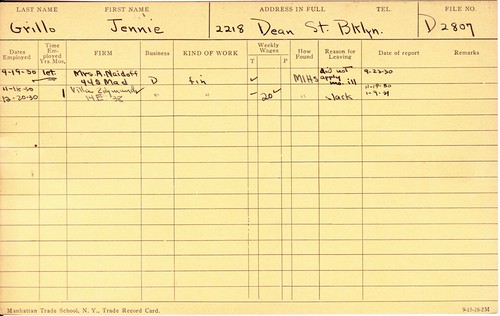
As you can see, Jennie worked primarily in dressmaking (listed as "D" in the "Trade" column), first as an assistant finisher ("Ass't Fin") and then as a finisher ("Fin"). This is typical of the Manhattan Trade dressmaking students, most of whom were place in finishing jobs. Her wages, which were primarily in the range of $18 to $20 a week, were typical as well. Also of note: Under "Reason for Leaving," you can see that the term "Slack" was frequently used. This does not mean Jennie was a slacker; rather, it indicates that the business had entered its slow or "slack" season and was therefore reducing its staff.
The final card in Jennie's file contains comments from her and from the placement office's staff, which appear in black ink, and from her employers, which appear in red (click to enlarge):
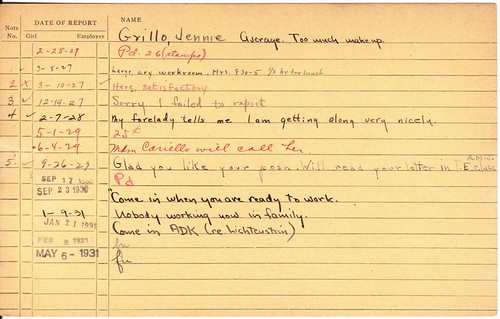
It's mostly unremarkable, but I recognize the handwriting on the little note at the top of the card — "Average. Too much makeup." That's a classic bit of critical commentary from the woman who ran the school's job-placement office at the time, Althea Kotter, who seems to have reveled in the art of the withering critique. (More of her report card comments, many of them quite entertaining, are available here, and you can learn more about her very interesting backstory by scrolling down to about the midpoint of this page.)
That's enough for today. Tomorrow: A close look at the report card of another student who signed Rose Simone's autograph book.

No comments:
Post a Comment